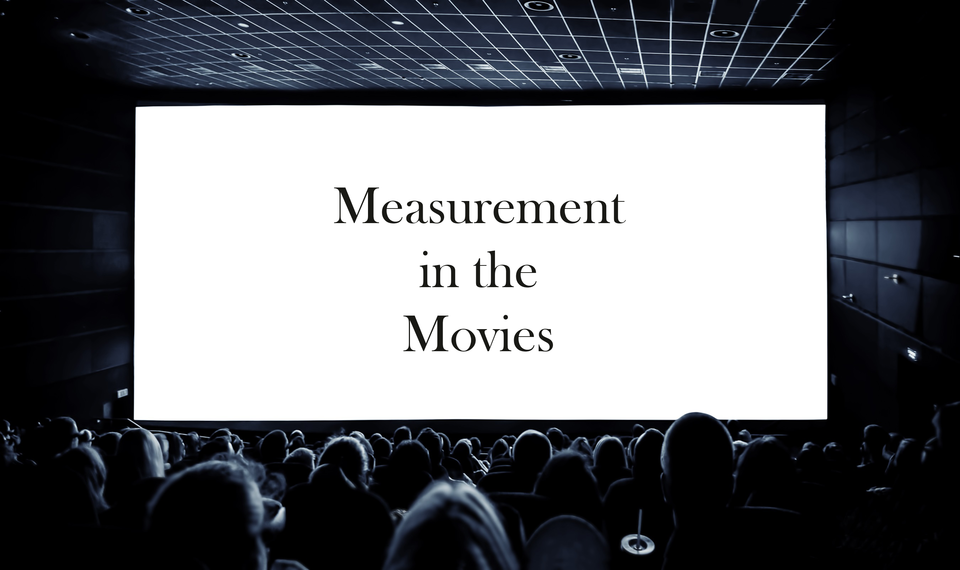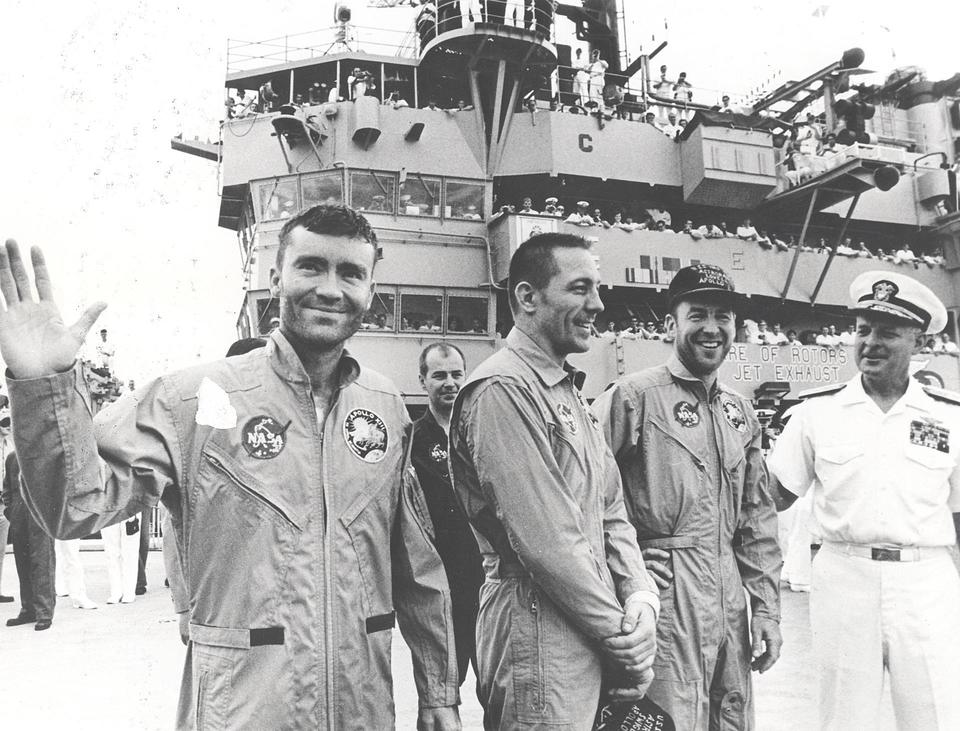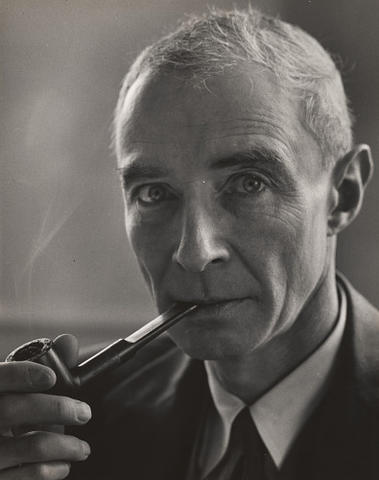Taking Measure
Just a Standard Blog

Raiders of the Lost Ark, Back to the Future and Apollo 13 are among our nominees for all-time best use of measurements in a film … but that won’t stop us at NIST from nitpicking some of the details.
Many critics and movie fans alike name 1981’s Raiders of the Lost Ark as one of the best films of all time. But watching the movie as a 12-year-old, I didn’t realize that it has what some consider to be a major flaw, pointed out in a 2013 episode of The Big Bang Theory. As the argument goes, Indiana Jones, the main character, made no difference in the outcome of the film. With or without him, the movie would play out the same: The Nazis would have found the Ark of the Covenant and opened it, triggering their demise.
While Indy’s effect on the plot has now become the subject of endless internet debate (what hasn’t?), I can still hold onto one fact as a proud NIST employee. Measurements play a key role in the plot — with one inaccurate measurement nearly killing Indy.
I’m talking about the scene at the start of the film in Peru, where Indy enters a temple laced with ancient mechanical traps. Indy wants to steal a prized golden idol sitting on a pedestal at the center of the temple. But he knows that taking the idol is likely going to activate a deadly trap.
When he reaches the pedestal, Indy takes out a small bag of sand, eyeballs it in relation to the idol and dumps some grains from his bag. He grabs the idol and immediately places the bag on the pedestal. At first, it looks like the swap worked, and Indy smiles in pleasant surprise. But a moment later, the bag of sand sinks the pedestal, causing the temple to self-destruct. Indy runs for his life.
I’ve never seen a better illustration of the importance of accurate mass measurements, which can indeed have life-and-death consequences in the real world. Accurate mass measurements enable patients to receive the right amount of medicine and help engineers design jet turbines and rocket engines that produce adequate thrust to deliver passengers and payloads. I think the makers of Raiders of the Lost Ark inadvertently created one of the most entertaining ways to deliver this point home to the general public. Milligrams (and sometimes even nanograms) matter!

Later in the movie, measurements play an even more critical role in the plot, as Indy and the Nazis vie to find the legendary Ark of the Covenant. To do this, Indy obtains the headpiece to the Staff of Ra from co-adventurer Marion Ravenwood. By taking the staff to an archaeological dig site in Egypt, and placing it in an ancient map room, he hopes to see sunlight pass through a gem in the center of the headpiece and point to the exact location of the ark. However, the staff itself is missing. The headpiece indicates that the height needs to be 5 kadams, an ancient measurement unit. Indy’s collaborator Sallah estimates each kadam is about 12 inches (about 30 centimeters). They create a staff with a height of 5 kadams (presumably 60 inches) and place the headpiece on it.
This leads to a measurement goof that’s hard to explain away, even in the fantastical world of the movie. Indy is shown holding the staff, and he appears to be roughly 80% of the staff’s height. But if the staff is a height of 5 kadams (60 inches, about 1.5 meters), that would indicate that he shrunk to about 4 feet (1.2 meters) tall! (Unless they corrected their error in a deleted scene — one can only dream of a NIST Director’s cut of the movie!)
You probably never want to see another movie with us by now, but I hasten to add that the Staff of Ra scene serves the storytelling perfectly. It shows how the protagonists’ care for measurement and accurate interpretation of ancient writing provides the correct answer. What better message could there be for budding scientists?

In case you were wondering, the kadam (also spelled as “qadam”) is indeed an ancient measurement unit that was used in South Asia and the Middle East. NIST research librarian Keith Martin told me the word translates as “to walk” or a “footstep” or a “foot,” with a wide range of values corresponding to these different meanings, and it even evolved in some places to mean the distance covered in many hours of walking. “Ah, the fun times before standardization,” Keith said.
Back to the Future
Of course, Raiders of the Lost Ark is not the only movie that uses measurement in its plot. 1985’s Back to the Future is where many of us (including my 16-year-old self) first heard the word “gigawatt” (which means a billion watts). According to Doc Brown, 1.21 gigawatts was the amount of power that he needed to deliver to his juiced-up DeLorean sports car to travel through time, at a speed of 88 miles per hour. Of course, these are made-up numbers, but they communicate to the audience that exact measurements — determined through mathematical calculations and scientific and engineering considerations — are often used to perform impressive tasks. Doc Brown reinforces the idea that science is powerful and cool.
Moneyball
In the film Moneyball (2011), baseball general manager Billy Beane relies on statistics based on exhaustive measurements of baseball players’ performance. Beane uses this information to make key decisions on which players to add to the roster and what to do in critical game situations.
Based on a true story, the film (and book of the same name) shows the major influence of statistician Bill James, whose field of sabermetrics (based on the acronym for the Society for American Baseball Research, or SABR) has revolutionized the game.
What amazes me is how well baseball fans know and understand these often-intricate statistics, whether it’s WHIP (walks plus hits per innings pitched) or wOBA (weighted on-base average). I think the movie helped communicate the power of measurements to help sports teams succeed.
Apollo 13

Measurements play a critical role in Apollo 13 — both in the movie and in real life. Based on the ill-fated 1970 Moon mission, the 1994 film tells the story of astronauts trying to safely get back to Earth after an electrical explosion causes their spacecraft to lose its oxygen supply.
Bereft of oxygen, the astronauts are exhaling carbon dioxide — with the buildup of CO2 threatening to poison and kill the crew. Keeping track of the cabin’s CO2 levels helped the crew and mission control to figure out how much time they had to improvise a solution to their problem — and provided suspense for movie viewers as the astronauts raced against time ultimately to return to Earth. (Some cross-movie trivia: Katherine Johnson, one of the real-life mathematicians portrayed in Hidden Figures, did work that helped the Apollo 13 crew navigate back to our planet!)
Star Wars
In the original 1977 Star Wars movie, Han Solo brags that his ship, the Millennium Falcon, is so good that “it made the Kessel run in less than 12 parsecs!” The problem is that the parsec is not a measurement of time but distance. To find out how this initially problematic measurement was resolved in the Star Wars universe, check out my earlier blog post on quirky measurement units.
Oppenheimer

Some people have asked me about 2023’s Oppenheimer.
I’d say that the movie mainly showcases calculations, which are a little different from measurements. To make a measurement, you use a technique or tool such as a tape measure to directly determine the value of a property such as the height of a door.
A calculation uses formulas or other mathematical tools to obtain values of the quantity of interest, such as the amount of energy in a nuclear detonation. (There are lots of important calculations in many movies — such as Hidden Figures and The Martian — and that could be a great sequel for this blog post!)
Calculations often use measurements but are a little different from measurements themselves. Perhaps the closest thing to a measurement in Oppenheimer was a fictional addition — Oppenheimer adding marbles to a bowl throughout the film to represent measurements of how much uranium had been refined at the various Manhattan Project facilities across the U.S.
So there you have it — our nominees for best use of measurements in movies. Can you name any other movies in which measurement is an important part of the plot? Which movie do you think should be the winner? Let us know in the comments!
About the author
Related Posts
Comments
I think many science-minded people would share your reaction. Much of what happens in the Map Room scene definitely does not "map" with how light acts in the real world! Even as a kid, I didn't quite get how the light entering the room becomes laser-like when traveling through the headpiece. But paradoxically, it's this magical quality of the light that helps me suspend disbelief better, as it reminds me this is clearly make-believe instead of something I should try to figure out scientifically!
Everyone, the other side of staff said to remove one Kadam honor the Hebrew God. So it’s not 5 but 4 kadam, the measurements used by Indy was 4 feet not 5. So the comment by author the film messed up and the staff should be 5ft but compared to Indy he should be “4 ft tall “ isn’t accurate.
"Dambusters" immediately comes to mind!
Hi Allan. Just read the Wikipedia entry for Dam Busters. Interesting. Need to see if I can find it on Netflix.
Are you referring to the 1955 movie? That is a great example. If I'm not mistaken, they mention measurements related to the dam among other things.
One very important measurement in "The Dam Busters" is the altitude of the plane as it approaches the dam. This had to be exactly 60 feet above the water for the bouncing bomb to work properly, but at such a low altitude the altimeter of the Lancaster bomber wasn't accurate.
The solution was to mount two spotlights underneath the plane, angled so that when it was at the right altitude the spots would overlap.
All of this happened in real life. The only thing about the measurement that the movie changed is that Wing Commander Gibson didn't come up with the idea after seeing spotlights on the singer at a West End musical- it was something that other RAF units had tried earlier.
Thanks for the fun article Ben - I've always believed that the arts have great potential to interest (or deter) young people in pursuing science and of course measurement science. Thanks for the references to ways measurement plays a critical role in major movies - I'll be pointing those out to people I know - I already talk about NIST a lot - this just gives me more interesting opportunities to bring up NIST! ;-)
Thanks, Jim! I'm so glad you enjoyed the article. I agree--talking about this topic provides more ways to describe measurement science and what we do at NIST!
Thanks for the fun read, Ben. Measurements do make the world go around, and it's always interesting to note when pop culture gets them right and when they are wrong, often in amusing ways.
Thank you for your kind words, Kelley, and I wholeheartedly agree!
Not a movie but a TV series. The original Battlestar Gallactica (the cheesy one) constantly used microns as a unit of time. "We'll be there in 10 microns." Gritted my teeth every time.
I watched the original series as a kid; your comment brings back memories of their use of "micron"! For a program that drew upon a lot of the same ideas as "Star Wars," it's interesting that they both appeared to use units of length as units of time!
Doesn't Oppenheimer show the famous "tickling the dragon" experiment, where they underestimated the radiation before momentarily creating a critical mass? Also, perhaps in Battlestar Galactica and Star Wars, relativity has become so well-known that they measure time using units of length, with a conversion factor of c0.
In fact they do not, as the film is more about Oppenheimer the man rather than the Manhattan Project per se.
Also in Back to the Future, there is a several dimensions trick, since 1,21 gigawatt must be delivered at a precise point in spacetime (10:04pm November 12, 1955), reaching at least 88 mph speed !
That's what flux capacitors were invented for, fueled by plutonium. Isn't it cool?
I always figured the "Kessel run in less than 12 parsecs" thing had to do with the navigational computer choosing a more optimal route. Maybe other spacecraft had to navigate around certain phenomena, etc but the Falcon could go "straight" through it.
Frank, thanks very much for your comment. You are very astute! Subsequent Star Wars stories resolved the "parsec" remark by explaining that Han used shortcuts in space-time to reduce the distance that the Falcon needed to travel to do the Kessel run.
The Englishman Who Went up a Hill but Came down a Mountain (1995) features the measurement of the elevation of said hill as the main plot point, not counting the romantic aspect. Topographer, surveyor, geomaticist Hugh Grant disputes the locals’ claim that their hill is a mountain.
I would like to submit the banter concerning the accuracy of a hypothetical torque wrench in "My Cousin Vinnie".
The best allusion to measurement that I recall is the torque wrench scene in "My Cousin Vinny." There is even a reference to calibration at NIST, which is a little garbled.
There is a film from the 80's called 'Spinal Tap' about a fictitious rock band. In one scene they want a giant replica of Stonehenge to drop on to the stage. The band's manager makes a simple hand-drawn sketch for the artist that's going to create the prop but he uses the wrong symbol and instead of getting an 18' replica, they get one that's only 18" tall.






Ha, that scene with the staff ALWAYS bothered me.